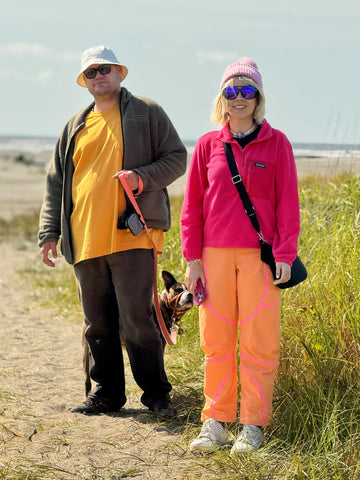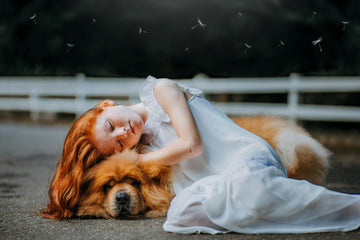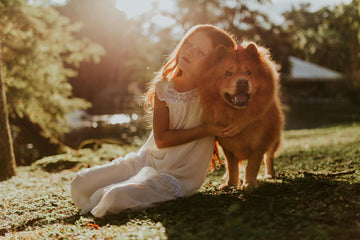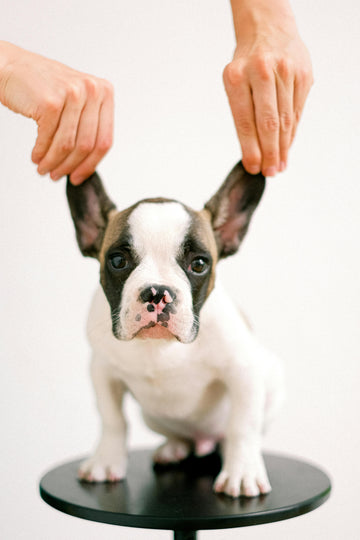When people talk about love, they often think of human relationships. But anyone who has had a dog knows that dogs love in a way that’s simple, honest, and powerfully unconditional. Dog love isn’t complicated—it’s pure, loyal, and unwavering. They don't judge, hold grudges, or ask for more than a walk, a meal, and your company.
But what exactly is dog love? How do dogs express it? How can you know your dog truly loves you, and what can we learn from the way they love? This blog dives deep into the emotional world of dogs, their loving behaviors, and what makes their bond with humans so extraordinary.
1. The Science Behind Dog Love
1. Dogs and Oxytocin: The Love Hormone
Studies show that when dogs and humans interact through petting, eye contact, or cuddling, both experience a surge of oxytocin. This hormone is often called the "love chemical" and plays a major role in bonding.
2. Evolution of Human-Dog Bonding
Thousands of years ago, dogs were domesticated not just for protection or herding but for companionship. Over generations, dogs evolved to read human emotions, facial expressions, and even our moods.

2. How Dogs Show Love
1. Tail Wagging (But Not Always!)
A loose, wiggly wag often means happiness. It’s a classic sign that your dog is excited and affectionate.
2. Eye Contact
Dogs make and hold eye contact with people they trust and love. A dog staring into your eyes is essentially saying, "You are my person."
3. Following You Around
Dogs love to be near their favorite humans. If your dog follows you room to room, it’s not just curiosity—it’s love.
4. Licking You
While excessive licking can have various causes, gentle licking is a natural way dogs show affection, similar to how they groom other dogs.
5. Cuddling and Physical Touch
Dogs that lean against you, sleep next to you, or nuzzle into your lap are expressing deep emotional bonds.
3. Why Dog Love Is So Powerful
1. It’s Unconditional
Dogs don’t care about your looks, your job, or your social status. You could have a bad day, make mistakes, or feel sad, and your dog will still love you.
2. It’s Always Honest
There’s no manipulation or hidden agenda in a dog’s love. Their emotions are raw, visible, and honest.
3. Dogs Are Empathic
Dogs can sense when you’re stressed, anxious, or depressed. Many will come closer, rest their head on you, or offer quiet support in your low moments.
4. They Love Without Words
Unlike humans, dogs express love through actions. This kind of non-verbal connection is powerful because it transcends language.

4. The Emotional Benefits of Dog Love
1. Reduces Stress and Anxiety
Cuddling or simply being around your dog can lower cortisol (the stress hormone) and boost serotonin and dopamine.
2. Boosts Mental Health
Dog owners often report fewer symptoms of depression and increased feelings of well-being, thanks to the constant companionship and daily structure that dogs provide.
3. Encourages Physical Activity
Walking and playing with your dog promote a more active lifestyle, which contributes to better mental and physical health.
4. Teaches Empathy and Responsibility
Children raised with dogs often develop a stronger sense of compassion and responsibility.
5. How to Return the Love
1. Quality Time
Dogs crave your presence more than toys or treats. Spend undistracted time with your pup—playing, walking, or relaxing together.
2. Physical Affection
Most dogs love gentle petting, especially behind the ears, under the chin, or along the back.
3. Positive Reinforcement
Use love, treats, and praise to train and guide your dog rather than punishment. Positive vibes deepen your bond.
4. Consistency and Trust
Be predictable. Dogs feel safe when they understand routines and can rely on your presence and care.

6. Dog Love Across Breeds and Personalities
1. Every Dog Loves Differently
Some dogs are cuddly lap dogs; others are more independent but show love in subtle ways, like bringing you toys or simply lying nearby.
2. Breed Influence
Labradors and Golden Retrievers are known for being affectionate, while breeds like Shiba Inus or Chows may be more reserved but still deeply bonded.
7. When Dog Love Turns into Separation Anxiety
1. Signs of Separation Anxiety
✔️ Destructive behavior when you’re gone
✔️ Excessive barking or whining
✔️ Pacing or accidents indoors
2. Addressing the Issue
Dogs with intense emotional attachments can develop anxiety when left alone. Training, crate familiarity, interactive toys, and gradual desensitization can help.
8. Dog Love Stories: Real-Life Examples
1. Hachiko: The Symbol of Loyalty
This famous Akita from Japan waited at the train station for his deceased owner every day for 9 years—demonstrating the depth of a dog’s loyalty.
2. Therapy Dogs in Hospitals
Dogs trained to support patients provide not just comfort but healing through affection, calming presence, and emotional connection.
3. Military and Service Dogs
These dogs form unbreakable bonds with their handlers, often risking their lives to protect or assist their human partners.

Conclusion
Dog love is a unique, unwavering bond that transforms lives. It’s healing, joyful, grounding, and sincere. Whether it’s your first dog or your fifth, that feeling of loyalty and love never gets old.
Dogs love without boundaries, ego, or judgment. In a world full of conditions and complications, dog love is refreshingly simple—and exactly what many of us need.

FAQs
1. How do I know my dog loves me?
Look for signs like tail wagging, eye contact, licking, following you around, and cuddling.
2. Can a dog fall in love?
While not romantic, dogs form deep, emotionally secure attachments with humans and other pets.
3. Do dogs understand love?
Dogs don’t understand "love" as humans define it, but they experience and express strong, loyal emotional bonds.
4. Why does my dog stare at me?
Usually, it’s a sign of affection or curiosity. In dog language, long eye contact can mean trust and love.
5. Can a dog love more than one person?
Absolutely. Dogs can bond with multiple people and form individual relationships with each.







